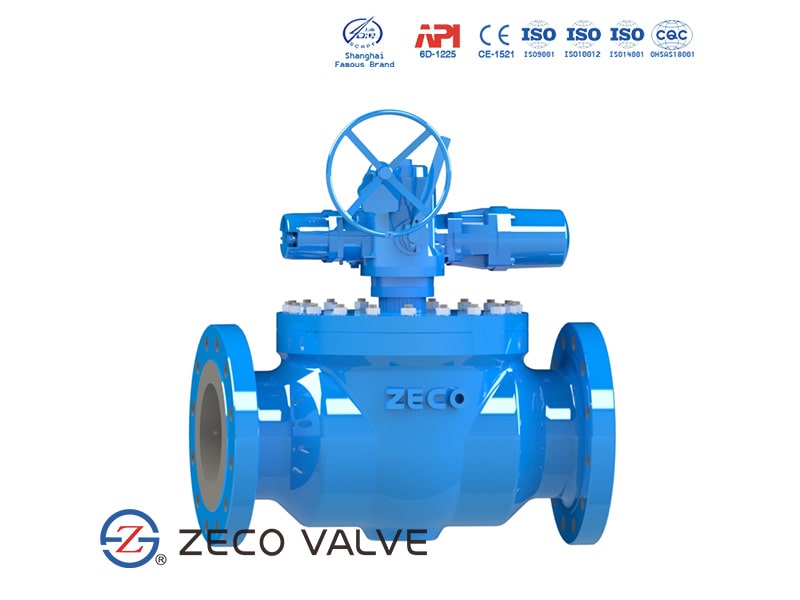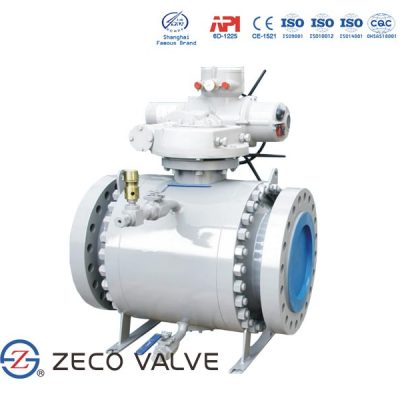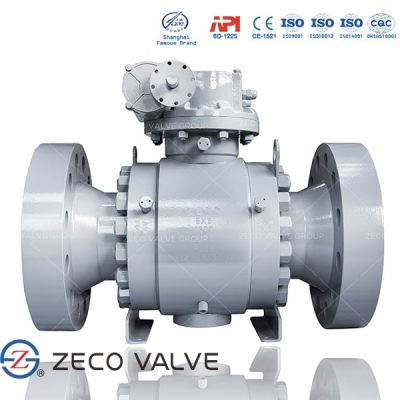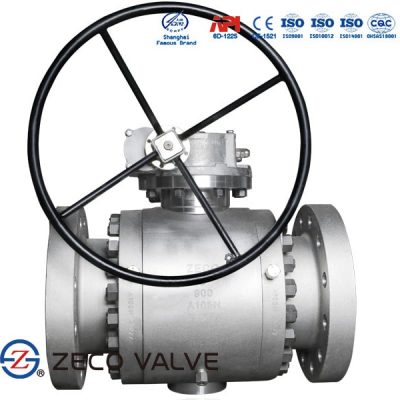Top Entry Ball Valve
Description
Due to the distinctive nature of the environmental conditions and operating conditions of the process, a typical ball valve is not sufficient and the system demands high performance. Using the top entry structure, it is not needed to remove the ball valve from the line when the seat is serviced or replaced, so it is easy to check and maintain the ball valve.
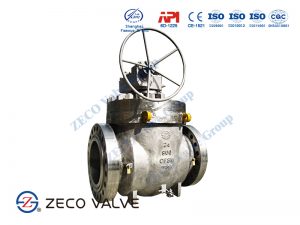
What is a Top Entry Ball Valve?
The top entry ball valves are the valves that assemble the ball from the top end. It’s quite similar to a globe valve that has a body and a cap, except that the trim portion uses a ball type. It consists of a single entity. Typically, the top entry ball valves are made of cast metal.
Body Construction of Top Entry Ball Valve
- Body bonnet design features bolted construction, and its sizing complies with requirements given in ASME VIII Div. 1
- Bolted construction allows in-line disassembly for inspections and potential repairs
- Removing the bonnet from the valve allows free access to the ball and the seats, which can simultaneously be taken out without the need for any special maintenance tools
- After maintenance, seating surface integrity can be assessed by pressurizing the body cavity only, before any repressurization of the pipeline (standard DPE design)
- Body drain provided in the lowest part of the body cavity, featuring an NPT drain valve with a safety plug
Design of Top Entry Ball Valve
- Top entry
- Trunnion mounted
- Lever or gear operated
- Single seated with DPE seat
- Fire safe graphite free stem sealing
- Double sealed body-to-bonnet connection
- Extended butt weld ends
- Optional welded-on flanges with radiographic inspection for weldments
- Production testing according to EN 12266-1, API 598, API 6D
- Cryogenic testing (on demand): BS 6364
How does a Top Entry Ball Valve work?
Ball Valves have a ball that is supported at the bottom by a trunnion. When the bore is positioned in the direction of the conduit, the valve is in an open position, letting the fluid flow in. The stem starts to go down, and because of the channels machined on it, it twists 90°, causing the ball to turn the same. Then some of the channels are machined straight, and the stem can’t just go down.
In this case, owing to the angled surface, the stem drives the ball to the bottom trunnion and the seat. The ball only hits the seat in this position, and there is no pressure during the rest of the movement.
Top Entry Ball Valve comes in two main configurations:
Full Bore: The size of the trim is the same for the conduit. In this case, the valve is ideal for pigging. Reduced Bore: The height of the trim is less than the size of the pipeline.
Features of Top Entry Ball Valves
- Soft, metal or composite material seated.
- Bi-directional tight shut-off.
- Double block & bleed.
- Fire safe and fire tested.
- Low operating torque design.
- Wide range of materials and sizes.
- Spring loaded seats.
- Trunnion mounted with energized seats.
- Anti-blowout stem design.
- Suitable for above ground or below ground installation.
- Soft, metal or composite material seated.
- Light weight cast body.
- Class V shut-off.
- Graphite stem packing.
- Forged design.
- No trim in steam flow.
- Tapered profile to minimise flow induced vibration.
- Variable spray nozzle.
Applications of Top Entry Ball Valves
- Corrosive fluids
- Natual Gas Pipelines
- Oil Pipelines
- Refineries
Material of Top Entry Ball Valve:
| No | Part | Material |
| 1 | Body | ASTM A351 CF8M |
| 2 | Bonnet | ASTM A351 CF8M |
| 3 | Ball | ASTM A182 F316 |
| 4 | Seat | ASTM A182 F316 + DEVLON |
| 5 | Stem | ASTM A276 316 |
| 6 | Anti-static Device | SS316 |
| 7 | Gasket | Graphite + SS316 |
| 8 | Bolt | ASTM A193 B8M |
| 9 | Nut | ASTM A194 8M |
| 10 | O-ring | Viton A |
| 11 | Gear | Assembly |

